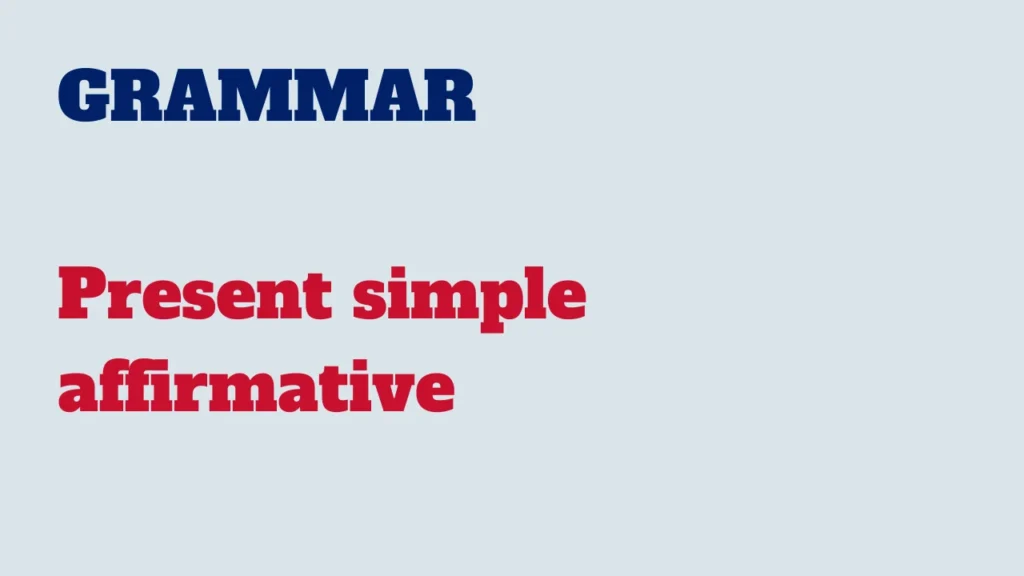The present simple tense in affirmative sentences is used to express regular actions, facts, habits, or general truths.

Here’s how to form present simple affirmative sentences:
Structure:
Subject + Base Form of the Verb \(-s if the subject is third person singular\) + Complements or Additional Information
Examples:
I play tennis every Saturday.
She learns English at the local school.
We live in a big city.
They enjoy watching movies.
The sun rises in the east.
Table: Present simple – affirmative form
| Subject | Present Simple Affirmative | Examples |
|---|---|---|
| I | I + base verb | I play the piano. |
| You | You + base verb | You work hard. |
| He/She/It | He/She/It + base verb + ”s” | She reads a book. |
| We | We + base verb | We study together. |
| You (plural) | You + base verb | You speak Spanish. |
| They | They + base verb | They enjoy music. |
Usage:
Habits and routines:
The present simple tense is commonly used to talk about habits and routines.
Example:
I walk to work every day.
Facts or general truths:
Used to express facts, general truths, or scientific truths.
Example:
Water boils at 100 degrees Celsius.
Permanent situations:
Describes permanent or long-lasting situations.
Example:
She works as a nurse.
Timetables and schedules:
Used to express future events in timetables or schedules.
Example:
The train leaves at 3 PM.
Common mistakes to avoid:
Incorrect: She play the piano beautifully.
Correct: She plays the piano beautifully. (The correct form for third person singular is “plays.”)
Incorrect: I watch TV every evenings.
Correct: I watch TV every evening. (Use “evening” without an “s” for a habitual action.)
Understanding how to form and use present simple affirmative sentences allows you to convey regular actions, habits, and facts accurately in English. Practice constructing sentences in the present simple tense to enhance your language skills. Happy learning!



